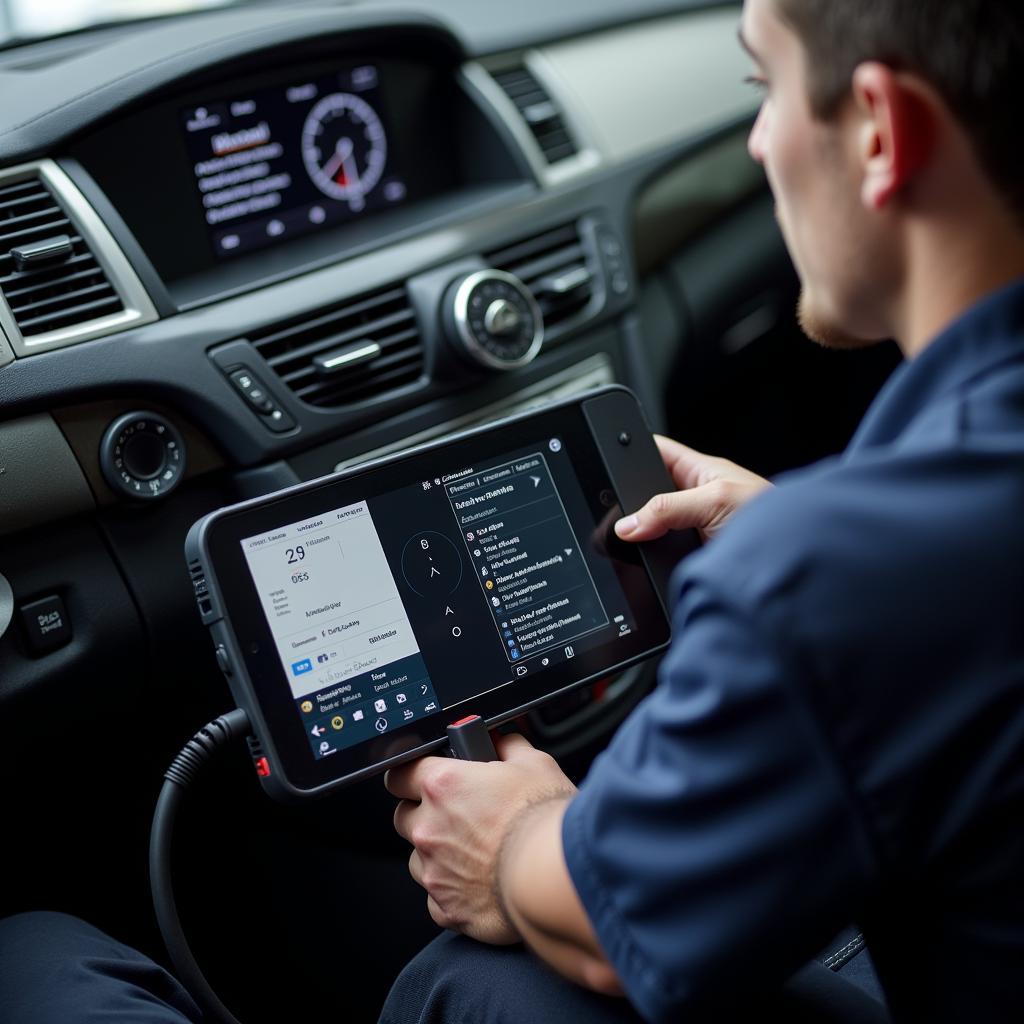The “Check Brake Electrical System” warning light on your 2005 Jeep Grand Cherokee can be a frustrating issue, but it’s important to address it promptly to ensure safe braking. This light indicates a potential problem with your vehicle’s braking system, and it’s essential to get it checked out by a qualified technician.
Understanding the Warning Light
The “Check Brake Electrical System” light is triggered by a fault in the electrical components related to your braking system. These components include the brake light switch, brake pressure sensors, ABS module, and wiring harness. The light illuminates when the electronic control unit (ECU) detects a malfunction in these components.
Common Causes of the Warning Light
Here are some common reasons why your 2005 Jeep Grand Cherokee might be displaying the “Check Brake Electrical System” warning light:
1. Faulty Brake Light Switch
The brake light switch is responsible for activating the brake lights when you press the brake pedal. If this switch malfunctions, it can trigger the warning light.
2. Defective Brake Pressure Sensors
Brake pressure sensors monitor the pressure in your braking system. If these sensors become faulty, they can send inaccurate readings to the ECU, causing the warning light to illuminate.
3. ABS Module Failure
The ABS module controls your anti-lock braking system. If this module fails, it can cause a variety of problems, including the “Check Brake Electrical System” warning light.
4. Wiring Harness Issues
The wiring harness connecting the various components in your braking system can be damaged or corroded. This can disrupt the flow of electrical signals, triggering the warning light.
5. Low Brake Fluid Level
While it’s not directly related to the electrical system, a low brake fluid level can also cause the “Check Brake Electrical System” warning light to illuminate. The brake fluid reservoir contains a sensor that detects low fluid levels, which can trigger the warning light as a precautionary measure.
Diagnosing the Problem
To determine the cause of the “Check Brake Electrical System” warning light, you’ll need a proper diagnosis. Here’s what you can do:
- Check the Brake Fluid Level: Start by checking the brake fluid level in the reservoir. If it’s low, top it off with the correct type of brake fluid.
- Inspect the Brake Light Switch: The brake light switch is located near the brake pedal. Visually inspect it for any signs of damage or wear.
- Use an OBD-II Scanner: Connect an OBD-II scanner to your vehicle’s diagnostic port to retrieve any error codes related to the braking system. These codes can provide valuable clues about the underlying problem.
- Professional Diagnosis: If you’re unsure about the cause of the warning light, it’s best to take your vehicle to a qualified mechanic for a professional diagnosis.
Fixing the Issue
The repair method will depend on the specific cause of the problem. Here are some common fixes:
1. Replacing the Brake Light Switch
If the brake light switch is faulty, it needs to be replaced. A qualified mechanic can do this relatively quickly.
2. Replacing Brake Pressure Sensors
Faulty brake pressure sensors also require replacement. A mechanic can access these sensors and replace them.
3. Repairing Wiring Harness Issues
If the wiring harness is damaged or corroded, it may need to be repaired or replaced. This might involve splicing the wires or replacing the entire harness, depending on the severity of the damage.
4. Repairing or Replacing the ABS Module
If the ABS module is faulty, it might need to be repaired or replaced. However, replacing an ABS module can be costly.
Taking Preventive Measures
While you can’t prevent all potential issues with your braking system, there are steps you can take to minimize the risk of encountering the “Check Brake Electrical System” warning light:
- Regular Maintenance: Schedule regular maintenance checks for your vehicle, including inspections of the brake system components.
- Inspect the Brake Lines: Look for leaks, corrosion, or damage in the brake lines.
- Keep Brake Fluid Toped Off: Ensure the brake fluid level in the reservoir is always within the appropriate range.
- Address any Warning Lights: If any other warning lights illuminate on your dashboard, address them promptly to prevent further complications.
Conclusion
The “Check Brake Electrical System” warning light on your 2005 Jeep Grand Cherokee is a serious issue that requires attention. By understanding the common causes, diagnosing the problem, and addressing it promptly, you can ensure your vehicle’s braking system is functioning properly and keep you safe on the road.
FAQ
1. Is it safe to drive with the “Check Brake Electrical System” warning light on?
It’s generally not recommended to drive with this warning light on, as it indicates a potential problem with your braking system. It’s best to have the issue diagnosed and repaired as soon as possible.
2. Can I reset the “Check Brake Electrical System” warning light myself?
You might be able to reset the light temporarily, but this doesn’t address the underlying problem. It’s essential to get the issue diagnosed and repaired to ensure your braking system is safe.
3. How much does it cost to fix the “Check Brake Electrical System” warning light?
The cost to repair the problem can vary depending on the specific cause and the parts needed. It’s best to contact a mechanic for a specific quote.
4. Can a faulty brake light switch cause other issues?
Yes, a faulty brake light switch can also cause other issues, such as problems with the cruise control system.
5. Is it possible to drive with a low brake fluid level?
It’s not advisable to drive with a low brake fluid level. This can lead to brake failure and a serious safety hazard.

